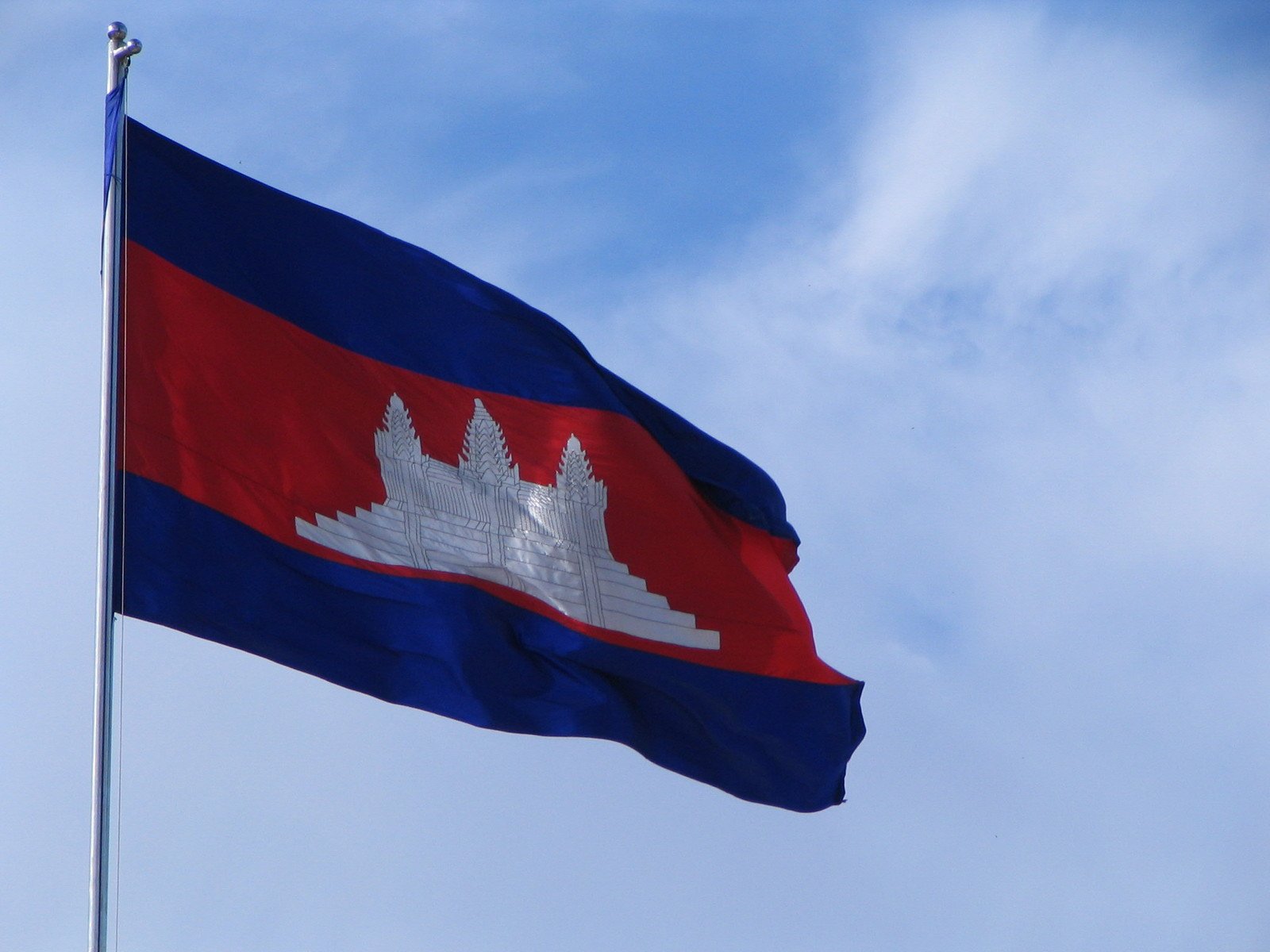
About Cambodia
Cambodia is one of the countries of Southeast Asia on the Indochinese mainland.
Population: 16.49 million (2019)
Capital: Phnom Penh
Language: Khmer (major language)
Government: Constitutional monarchy operated as a parliamentary representative
Currency: Cambodian Riel ($1 U.S Dollar = 4060 Cambodian Riel)
Religion: Buddhism (96%), Islam (2%)
Cambodia has tropical weather and is warm throughout the entire year. There are two major seasons: dry and rainy season. November through May is the dry season, and from June to October is the rainy season. The total land area is estimated at over 18 million hectares, and about 15% of the land is used for agriculture such as rice farming.
Cambodians are predominantly Theravada or Hinayana Buddhist. Buddhism is a national tradition, with a bureaucracy and a written tradition. Religious beliefs have influence on law and policies. Buddhist culture tends to encourage deference to authority and the acceptance of one's place in the hierarchy of Cambodian society. Cambodia has the most extensive concentration of religious temples in the world, Angkor Wat.
Cambodia ranks in the top ten most welcoming countries for foreign residents, and they tend to have a strong sense of attachment to members of their extended family, close neighbors and friends.
Our goal for the Banyan Tree Clinic is providing equal health system strengthening to existing clinics and building new clinics where needed in rural communities in Cambodia. Our goal is starting with Cambodia and we want to expand to other nations based on need. Everyone's support is important to improve the public healthcare system in rural communities.
References:
- Chandler, D. P. and Overton, . Leonard C. (2021, March 10). Cambodia. Encyclopedia Britannica. https://www.britannica.com/place/Cambodia
- https://www.nationsonline.org/oneworld/cambodia.htm
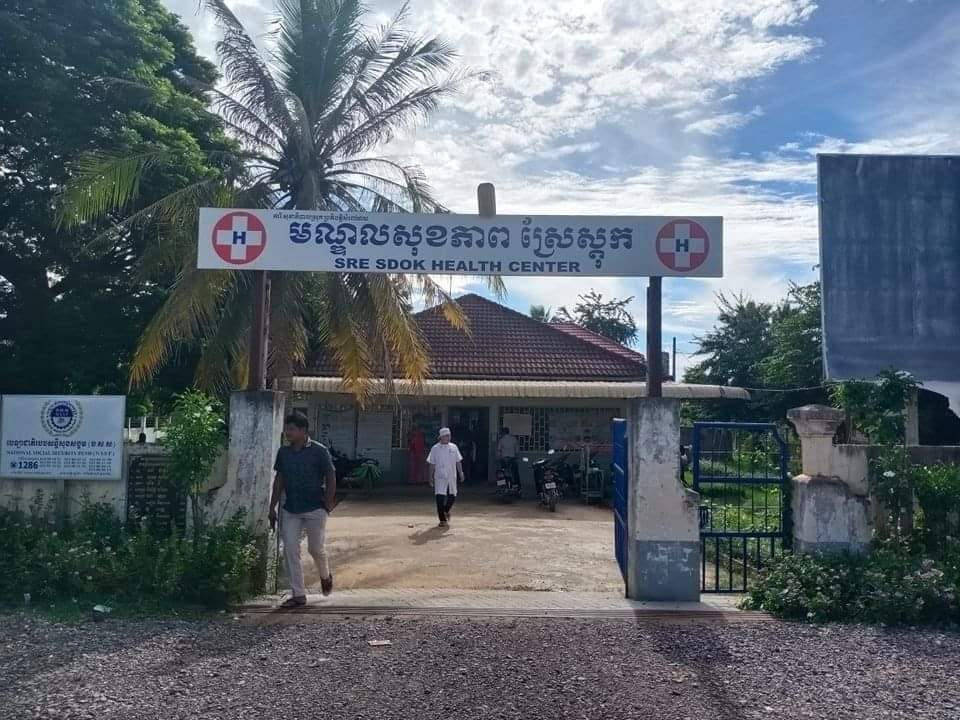
Different ways you can support Banyan Tree Clinics in making a difference
With so many causes in the world requesting support, it can seem overwhelming. For me, the children of Cambodia have a special place in my heart because of the difficult challenges faced by their parents and grandparents to give them a good life after the devastation of the Khmer Rouge and the Killing Fields.
Thank you for helping Banyan Tree Clinics raise enough money to get wheelchairs and other medical supplies to the clinic in Pursat Province, Cambodia. The staff are very grateful and we are excited to expand how we can help them. In addition to continue accumulate medical supplies, our next fundraiser goal is to provide health assessments and nutritional education to the area through various means.
I am aware of an easy way to support our Banyan Tree Clinics that costs you nothing and fits right in with your regular shopping habits! - Amazonsmile.com
All you need to do is go to AmazonSmile.com and sign up. If you are already an Amazon user, it is no extra charge, so there is no obligation to you. Once signed up, all you need to do when you order is to be sure to go to AmazonSmile to order. When you sign in to AmazonSmile the first time just type in Banyan Tree Clinics as your non-profit organization of choice and a small percentage of the amount of your purchase will be donated to Banyan Tree Clinics. Same products, same prices, just some needed money for the Foundation.
Another way you can support the Banyan Tree Clinics is when your employer asks you in their annual review if you want to give a percentage of your income to a charity when your paycheck is prepared. Sometimes they will match your contribution or contribute a percentage. Banyan Tree Clinics is listed on both CharityNavigator.org and Guidestar (now renamed Candid.org). Please ask your employer to include Banyan Tree Clinics on their list of approved charities for their employees to choose as their charity of choice.
And finally, when you share your passion about the good works of the Banyan Tree Clinics and someone asks how they can make an individual contribution, please direct them to our website, BanyanTreeClinics.org. We are working with Spoon Foundation (SPOON (spoonfoundation.org)) to engage in our next project, a health assessment survey, and are excited to get it done soon so we can start providing nutritional education in different ways to the community we are serving in the Pursat Province. What we learn from this community will help us as we grow and reach out to other community clinics throughout Cambodia, and eventually beyond.
Your continued financial support is appreciated and we will honor your trust in us by giving the clinics what support they advise is the most needed.
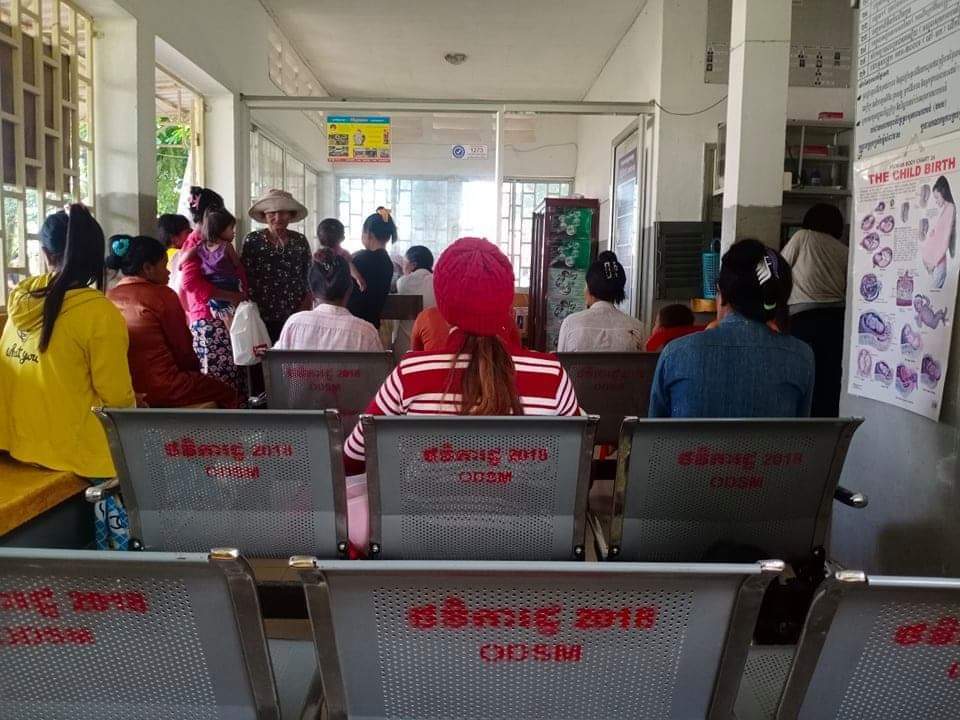
An Overview of Cambodia's Healthcare System
Cambodia has made remarkable progress in the 21st century, focusing largely on economic growth. As a result, the overall population is healthier and its healthcare system is growing stronger. Such rapid growth, however, has led to a lack of regulation and an extensive private healthcare sector.
Cambodia's budget for health care nearly doubled from 2007 to 2012 and about 50% of health spending is financed by foreign donors. Government funding accounts for most infrastructure and staffing with revenue supported by user charges. As of 2011, more than half of government expenditures were spent on medications and medical supplies, which is much higher than average. Cambodia does not have mandatory health insurance, and the few insurance companies that do exist target workers who can pay premiums, leaving the poor without monetary assistance.
Cambodian government health services are organized by the Ministry of Health which has 24 Provincial Health Departments in 81 Operational Districts. These districts are distributed according to population. Within each Provincial Health Department is a provincial hospital. Within each Operational District is a Referral Hospital that covers 100,000-200,000 people and delivers secondary care as well as preventative and basic care services. Cambodia has a ratio of 0.7 hospital beds per 1,000 population, indicating a pretty low supply overall. Diagnostic equipment such as MRI machines and CT scanners are extremely limited, especially in areas without consistent access to electricity.
There is a diverse array of healthcare professionals in Cambodia. Two thirds of public healthcare workers also work privately. There are NGO hospitals and charitable hospitals as well as public health facilities and private hospitals. There are also "non-medical health providers" such as traditional birth attendants and healers.
The main issues the Cambodian healthcare system faces today include low quality healthcare services and health inequalities. For instance, in the public sector, the Ministry of Health does an excellent job of promoting preventative care, the private sector is more focused on curative care. In rural areas, private non-medical health care providers make up half of all health care providers. Payments to private providers cost families an overwhelming amount of money, putting poor families at a disadvantage.
Cambodia has done an excellent job of propelling its country forward, reducing poverty and establishing democracy. Now that it has expanded its economy and health care systems, it is time to bolster the infrastructure of the health care system; increase regulations, become more efficient in spending, and expand protections for the poor.
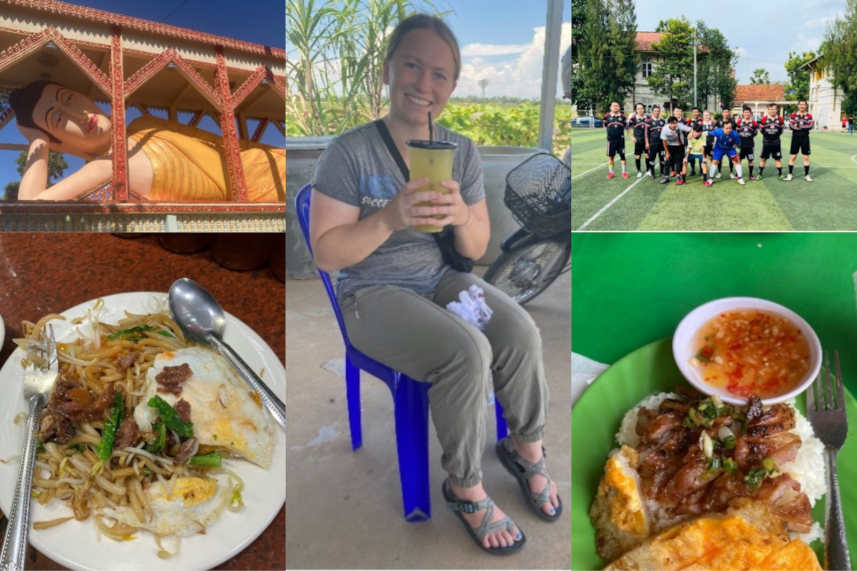
Meet Megan - our first student intern in Cambodia!
Hi everyone! My name is Megan Ruoff and I'm currently spending the summer in Cambodia doing an internship with Banyan Tree Clinics. I'm originally from Portland, but right now I'm doing my undergrad at Swarthmore College, just outside of Philadelphia.
I am interested in a variety of public health issues including nutrition, reproductive health, and sanitation/hygiene, and particularly the ways in which behavioral science can be leveraged to design and implement change in these areas. I love traveling, soccer, warm weather, being outdoors, and meeting new people, so Cambodia has been great for me!
So far I have enjoyed exploring Phnom Penh including visiting the various markets and wats (temples), sampling the street food, and finding people to play soccer with. My favorite foods thus far have been Lort Cha, grilled frog, and waffles. I was recently invited to play with a local team (pictured below) in some games, which has been a lot of fun and also a challenge since my weather app often indicates it feels like 109 degrees when we are playing. I also tried a kickboxing class here which was great fun!
I have also enjoyed meeting with representatives from various NGOs based in Phnom Penh and hearing their insights about the vast progress Cambodia has made on many public health indicators, as well as the most important public health issues still facing Cambodia. Their knowledge will be vital as I continue working on helping to determine how Banyan Tree Clinics might have the greatest positive impact here. Next up I will be headed to Pursat Province to experience a bit of rural Cambodian life.
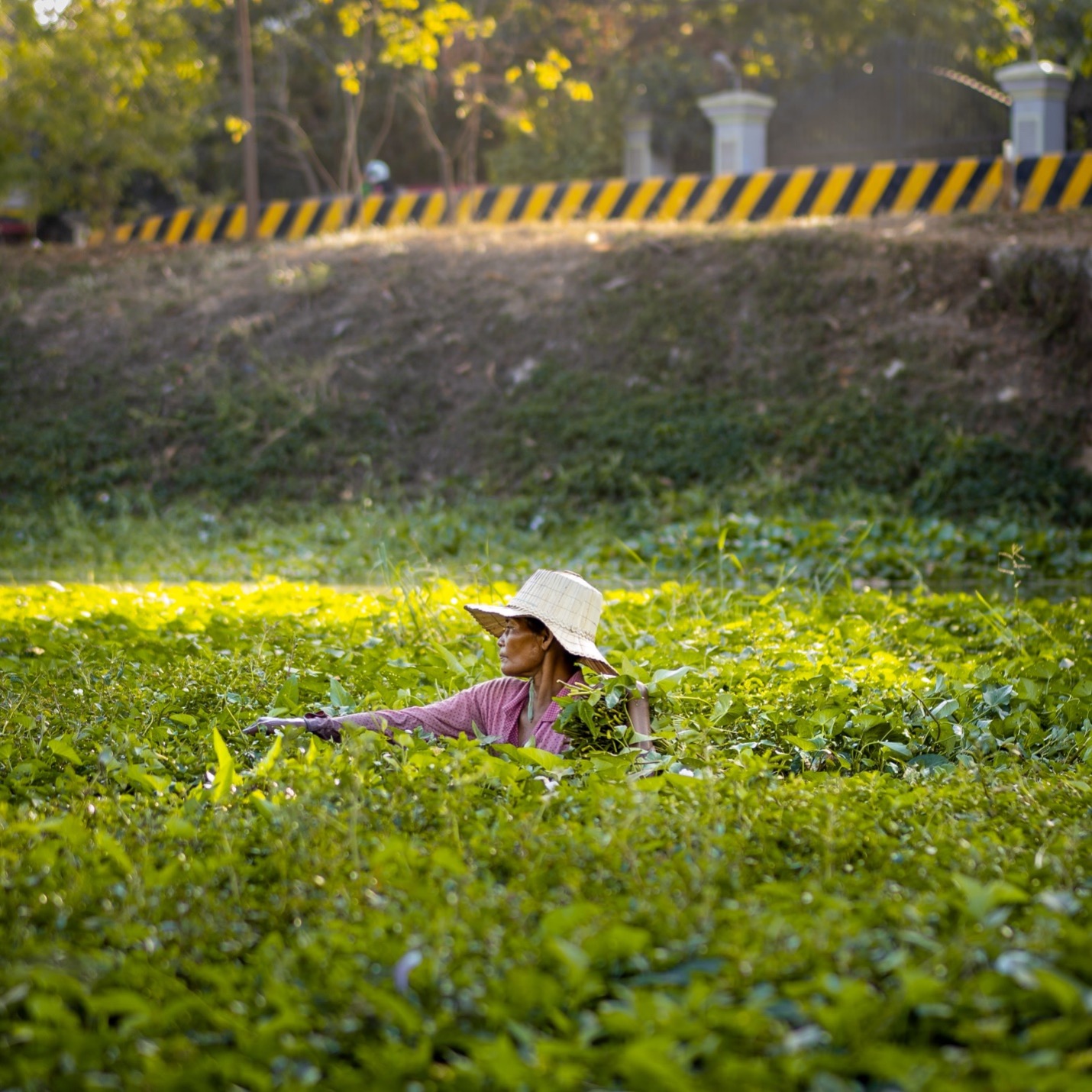
Health in Rural Cambodia - Field Notes from our Summer Intern
Many of the Cambodians working in the public health sector that I talked to identified access to water, sanitation, and hygiene (WASH) as being one of the biggest outlasting health issues here. 35% of rural Cambodians do not have access to basic drinking water services, and almost 40% do not have access to basic sanitation services. Additionally, many Cambodians still practice open defecation. The United Nations features access to WASH prominently in their Sustainable Development Goals, indicating a recognition of how crucial they are to health and well-being. Globally, almost a million people die every year due to inadequate access to WASH. 100% of these deaths are preventable through education and proper facilities.
Additionally, the disease and time burden from a lack of access to WASH disproportionately affects women, who may have to walk long distances to collect water, are charged with taking care of sick children and relatives, and are more vulnerable to sexual assault when finding a place to go to the toilet outside. The high domestic burden women in rural Cambodia face has been identified as an obstacle to professional advancement (some women do not want to take extra responsibilities professionally because they already have so many at home), and proper complementary feeding of young children (not enough time to cook a separate meal for the young child).
Intimately tied with issues of clean water, sanitation, and hygiene is malnutrition. 50% of child malnutrition is caused by a lack of access to these basic services. One million Cambodians are currently malnourished. 32% percent of children are stunted, meaning having been prevented from growing and developing to their full potential, and 10% are considered “wasted,” which is the most immediate and life-threatening type of malnutrition. Undernourished children are more susceptible to illnesses and diseases, do worse in school, and have worse economic outcomes as adults, meaning the impacts of malnutrition are not just individual, but societal.
Early interventions to prevent stunting are some of the most cost-effective human capital investments. The WHO, UNICEF, American Pediatric Association, and many other organizations recommend exclusive breastfeeding for the first six months of life as an important way to ensure adequate nutritional intake for babies as well as protect them from various infections, autoimmune diseases, and allergies. However, many women in Cambodia, a country where over 75% of people live in rural areas, must travel long distances or migrate to areas of greater population density for work. Because they are unable to bring their children with them, they are unable to breastfeed their children for the recommended amount of time. Some proposed solutions including having breastfeeding rooms in garment factories have been tried out, but so far uptake has been low because of additional unmet needs such as transportation of the children to the factory.
An additional nutrition-based issue in Cambodia is anemia. Studies have shown that ~50% of children under 5 are anemic, as well as ~50% of women of childbearing age. Anemia in children can affect growth, mental development, and function, and is often damaging to school performance. Anemia throughout pregnancy is linked to increased morbidity and fetal death. Anemia is often caused by nutritional deficiency, when the body does not absorb enough iron, folate, or vitamin B-12 from the diet. In Cambodia, it is thought to be caused by zinc deficiency in particular, as research has found that anemia here can not only be explained by a lack of iron.
During the horrific genocide from 1975 to 1979 in which Khmer Rouge killed 1.5 to 2 million (out of 7 million) Cambodians, doctors (among other educated people), health clinics, and health care supplies were specifically targeted for destruction. This devastation continues to affect the healthcare system today, including through a lack of modern medical technology and supplies, as well as a lack of trained personnel. The WHO reports that Cambodia has one of the lowest rates of physicians per population at 0.2 per 1000 people. This is 1/10 as many per person as in the United States, and only ¼ as many per person as neighboring Thailand and Vietnam have. Accessing medical care can be a major challenge for those who live far away from health clinics, especially during the rainy season when dirt roads become almost impassable.
Although Cambodia has made great progress in decreasing the prevalence of some illnesses such as malaria, HIV, and Tuberculosis, the presence of other, particularly noncommunicable diseases, have been on the rise. The percentage of the population with diabetes has more than doubled in the past five years. It is currently nearing the level in the United States. Doctors have also reported an increase in hypertension and other cardiovascular diseases. Research and funding for early interventions and public health initiatives for these emerging issues could help steer Cambodia down a healthier development path, and prevent millions of people from suffering.
Sources
https://sdgs.un.org/goals
https://www.ncbi.nlm.nih.gov/pmc/articles/PMC4924189/
https://opendevelopmentcambodia.net/social-accountability/health-center/
https://tradingeconomics.com/cambodia/indicators-wb-data.html?g=health
https://www.ncbi.nlm.nih.gov/pmc/articles/PMC4277029/#B2
https://pubmed.ncbi.nlm.nih.gov/32621576/
http://hismohcambodia.org/public/fileupload/carousel/HSP3-(2016-2020).pdf
https://reliefweb.int/report/cambodia/unlocking-cambodia-s-future-significantly-reducing-rates-child-malnutrition
https://www.usaid.gov/sites/default/files/documents/tagged_Cambodia-Nutrition-Profile.pdf
https://www.who.int/data/gho/data/indicators/indicator-details/GHO/physicians-density-(per-1000-population)

Growing Personal and Professional Skills with Banyan Tree Clinics
I joined Banyan Tree Clinics two years ago after responding to a volunteer advertisement. When you first interview for a position, there's that quick sense or intuition about the culture of the organization. I was immediately impressed by the founder's vision for growing sustainable health infrastructure in rural Cambodia. At the beginning of my journey, in November of 2020, the world was going through an unprecedented time and yet our board and volunteers continued to meet, strategize and work towards goals, all while establishing ourselves as a 501c3 nonprofit. We achieved our first fundraising goal and saw the immediate impact it had on the Pursat Province, Cambodia. The community received wheelchairs and other durable medical equipment like heart monitors. After that, we started to think bigger and our vision has grown as has our workforce. The most impressive thing about working in the nonprofit sector is the incredible people you meet who share the same passion for global health initiatives. My colleagues are amazingly focused and dedicated to our work. In the last two years I have also had the chance to meet with organizational executives from nonprofits all over the world and each of them greets you with a collaborative mindset and eager to share resources for the greater good and impact.
Parallel this journey, and what would soon merge into one road, was my academic path. After completing my bachelors degree in Health Science, I looked back at the 15+ years of healthcare experience I had. My roles in healthcare are diverse but primarily based in pre-hospital emergency care, ER, ICU and hospital medicine. My experience in healthcare management, training and education development helped me find my passion for teaching. However, I had found something bigger within the field of healthcare, something that was pulling me in with excitement. I enrolled in a masters of public health program at Purdue University Global and expanded my knowledge while using every opportunity to use practical skills from my degree program for my work at Banyan Tree Clinics.
During the course of my degree, they announced that I would need to find a field work site to arrange an internship for a total of 200 hundred hours. My fear of balancing work, my classes, being a mom and wife, gave me little hope that I could continue sharing my time volunteering with Banyan Tree Clinics. However, everything that we had been building over the last two years was ultimately rewarded with the most academically and professional compliment possible. Purdue University Global recognized Banyan Tree Clinics and members of our board as academically and professionally suitable as a field work site and supervisors, as mandated by the public health degree program. I have never been so relieved and overjoyed for a class in my life.
It was at this point, I realized just what a beautiful thing we have been building. Not only is our organization active in rural global health work but we had created a space that could accommodate university students and promote global health, rural health and nonprofit organization learning opportunities. For someone passionate about professional education and health, this made our organization that much more valuable. Presently, Banyan Tree Clinics has hosted several students from Purdue University Global for field work terms and ongoing relationship with the university to provide openings for their students is ongoing.
My time has been maximized in the most rewarding way these last few months as I completed my first 100 hours for my field work. I have experienced professional and personal growth during this time. Most importantly, I have been able to target my core public health competencies in my outreach internal and external to the organization. Our current project planning has expanded my ability to participate in project management, delegate, research and write content for implementation. I am thankful for these last two years with Banyan Tree Clinics and so excited for the opportunities to continue serving the people in Cambodia.
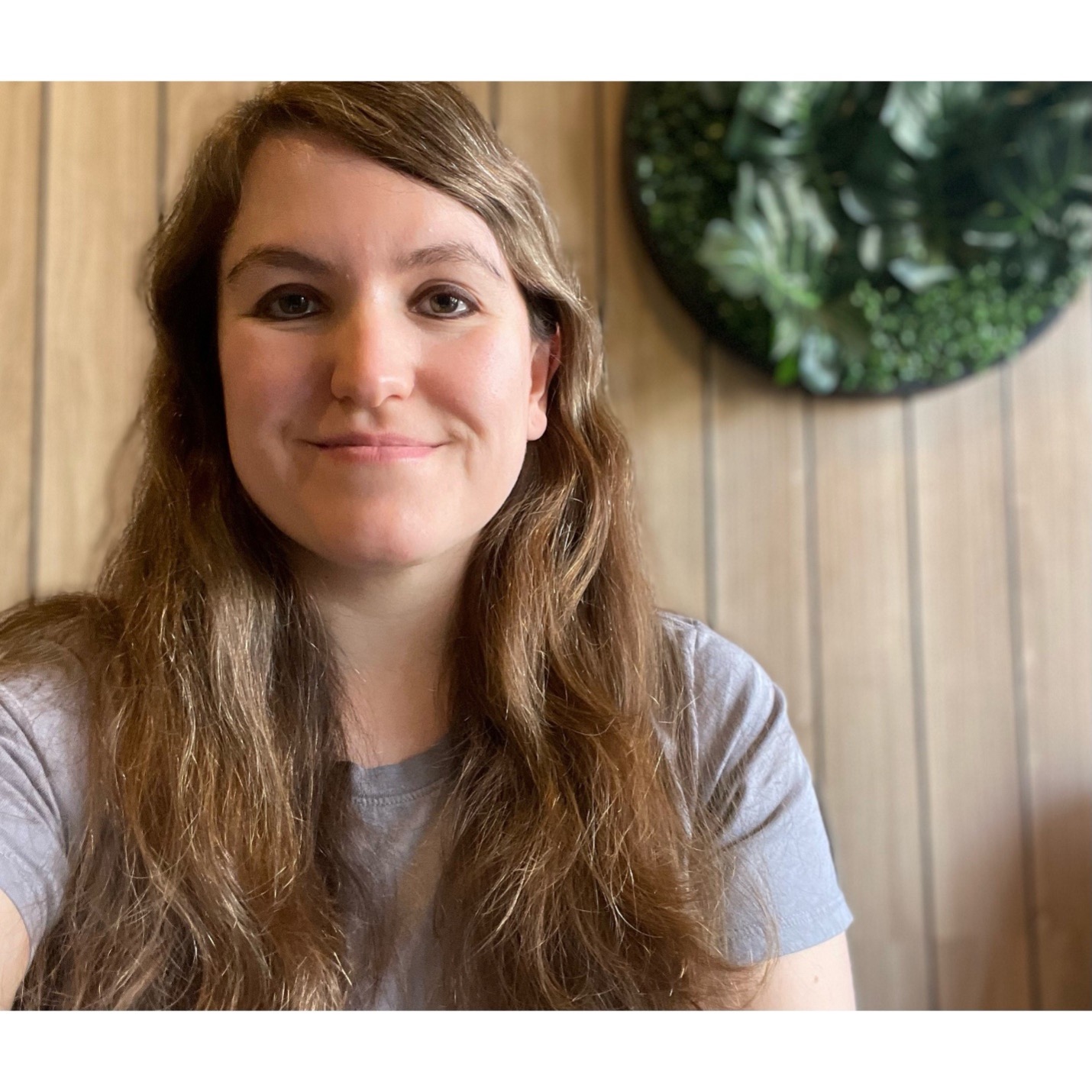
Our Founder Visits Cambodia!
Hello, Banyan Tree Clinics supporters! I am embarking on a trip to visit the community of Srae Sdok in Pursat Province, Cambodia. My goal on this trip is to network with the community to better understand how we can best support their needs and to determine the feasibility of the projects we hope to launch in this community. At Banyan Tree Clinics, we understand that the people who are best able to articulate the needs of the community are the members of the community itself, so hearing their voices will be instrumental to achieving our mission.
At this time, our organization has largely focused on raising funds to improve nutrition in Srae Sdok. This is part of four main pillars of health that we hope to address in this community:
- Nutrition and Education
- Clean Water Accessibility
- Sanitation
- Food Security
Nutrition and Education
As our summer intern, Megan Ruoff, detailed in her blog post, malnutrition is significant problem in Cambodia. With Banyan Tree Clinics, we hope to build upon the existing infrastructure in the Srae Sdok community to tackle this issue, particularly for children. The hope is to empower families to take ownership of their nutrition in order to prevent diseases that result from malnourishment such as wasting, stunting, anemia, diabetes and cardiovascular disease. This will be accomplished through education and nutrition assessments performed and led by local Cambodians. Community members who contribute to this effort would be compensated for their time, providing additional income support for these individuals.
Food Security
Closely linked with nutrition is food security. It is difficult to have adequate nutrition if access to food is not adequate. One possible approach to this problem is to support a garden at Koh Broteal School in Srae Sdok. This would provide an opportunity for the students to get involved with growing a garden and potentially encourage community members to grow gardens of their own. Another approach would be to provide a breakfast program for students at the school so that the children have a guaranteed meal each day.
Clean Water Accessibility
Currently in Srae Sdok, families do not always have reliable access to clean water, which can lead to a host of preventable illnesses. Banyan Tree Clinics hopes to partner with another nonprofit organization to assist with providing sustainable and low maintenance solutions for clean water. Additionally, we hope to select a local Cambodian to maintain the system, for which they would be compensated.
Sanitation
To address sanitation, we hope to work with EcoSoap (https://projectecosoap.org/), a nonprofit organization that works to reuse soap scraps from manufacturers. Those materials are then distributed to women in communities who can use the products to make their own bars of soap. Soap can then be sold in the market, providing an additional source of income in these communities. This initiative would both encourage the use of soap and provide a source of income for women in the community.
These projects describe just a few of the initiatives we have planned going forward for the community of Srae Sdok. Other initiatives in years to come may include medical mission trips and expansion into other communities in Cambodia and throughout the world. Stay tuned for more updates to come and follow along as we improve the health of Cambodians!
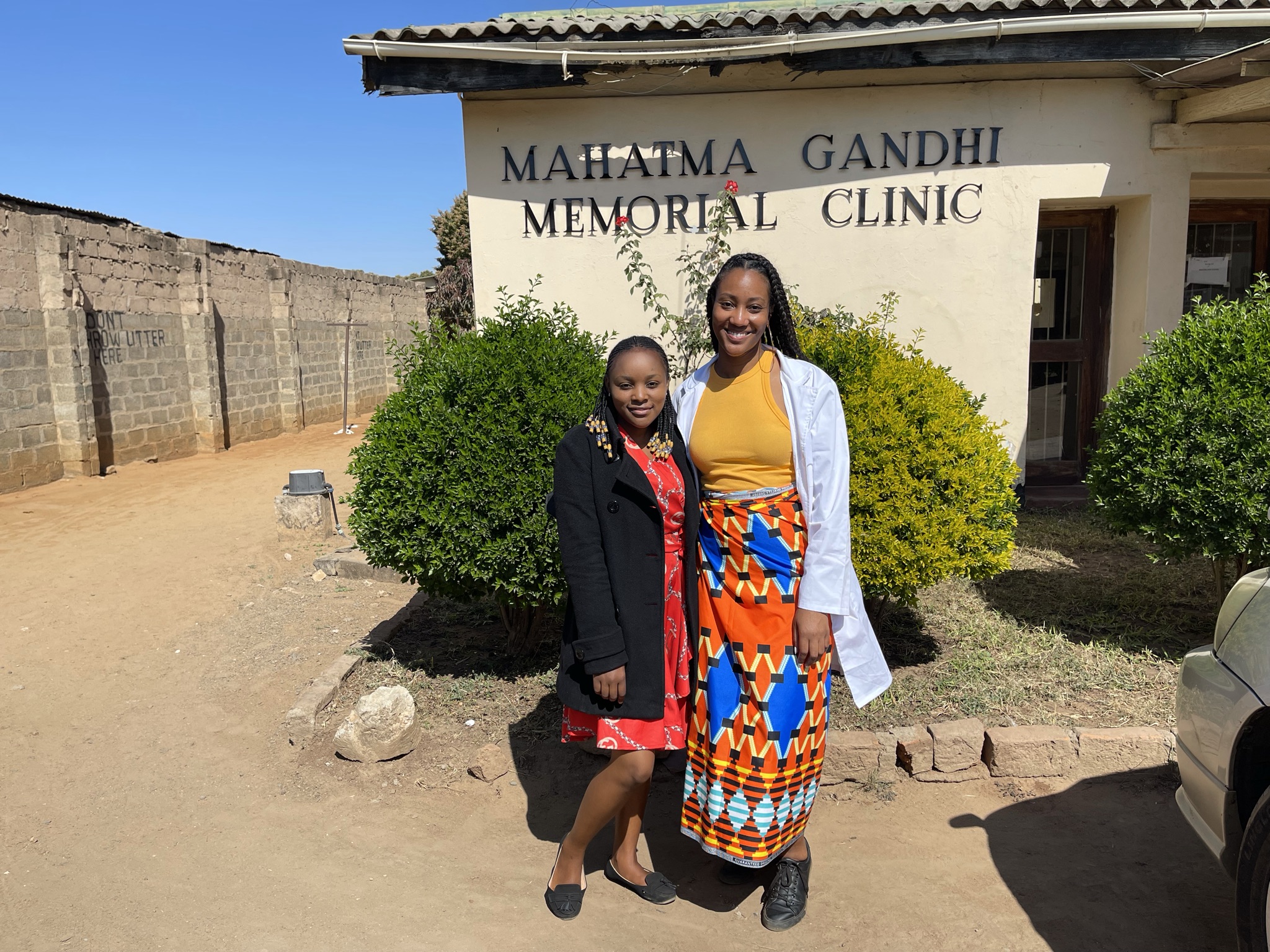
When work and passion collide
Hello! I am Lauren Soles, a pharmacist, and the newest intern at Bayan Tree Clinics. Since I was a young child, I have wanted to help others. This is one of the reasons I became a pharmacist. Working in the pharmacy provided me with the opportunity for daily patient interaction. I had regulars who I knew by name. They stopped by routinely and trusted me to as their medication expert. After a few years, I felt like something was missing, so I transitioned into another role where I would learn the business of pharmacy. While my new role did not have the same community impacts, it afforded me more autonomy and the ability to travel more.
My first "big" trip was to Haiti, where I experienced both awe at the beauty of the country and heartache from the bleakness of the lives of many of its inhabitants. The gap between access to healthcare in the US and Haiti was staggering. These disparities appeared to affect food and water supply, infrastructure, sanitation, and education. Again, I felt the need to serve. A year later, I traveled to Zambia to volunteer in the pharmacy at a local clinic. The community I served had many of the same barriers to flourishing.
It became my goal to help communities with similar disparities thrive and gain better access to healthcare that so many take for granted here in the US. Honing in on ways to insert myself into global initiatives, I decided to pursue a Master's in Public Health Purdue Global. After learning about health promotions programs, public health biology, and global health, I began applying for internships with organizations aiming to bring about real change in the world, especially in underserved communities in developing countries. My clinical program manager suggested Bayan Tree Clinics. When I discovered that the organization was led by a pharmacist and that its aim was assisting rural Cambodian clinics, I immediately contacted Allison. I began to see that she and I shared a passion for service. I also admired her for building a space for not only those in need but also those who want to make a difference.
Now that I am part of the Bayan Tree Clinics team, I can appreciate the diversity of skill sets. It is a welcoming environment that has given me real work public health experience and helped to sharpen competencies. From collaborating with other organizations to being actively involved in formulating program proposals, Bayan Tree Clinics is an ideal partnership that has identified realistic goals for impact in rural Cambodian communities. I look forward to continuing to work with the team planning fundraisers, being innovative, and seeking the flourishing of the communities we aim to serve.
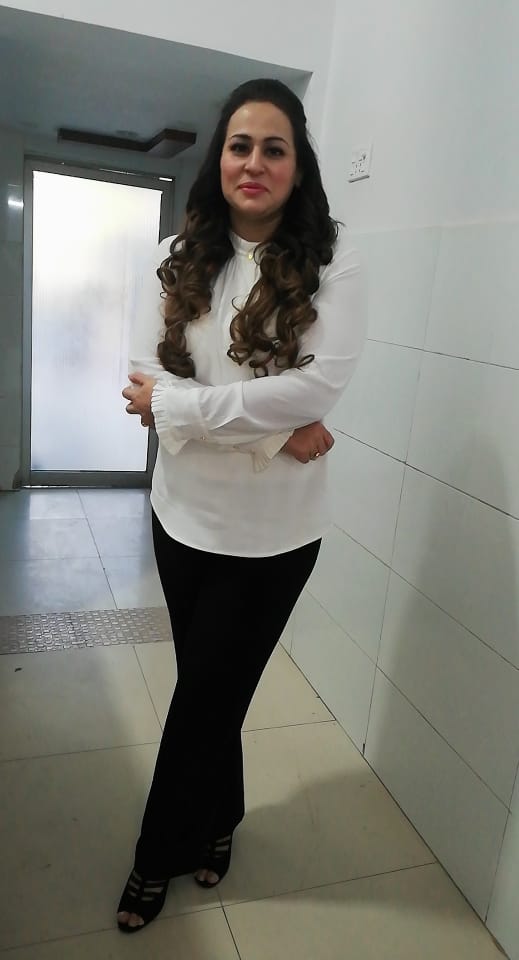
Interning Remotely at Banyan Tree Clinics: My Journey in Impacting Cambodian Public Health
About me
Hi my name is Qamer Memon, currently I am a Masters of Public Health student at Purdue Global University. I originate from Pakistan, where I worked as an Obs/gyne managing my own center, but moved to the United States for a chance at a better future for my kids, leaving family, friends and my medical center behind. I moved and after many trials and tribulations, I ended up as an MPH student to intern at Banyan Tree Clinics.
Introduction
In today's interconnected world, it is easier than ever to make a difference on a global scale without having to pack your bags and book a plane ticket. I discovered this truth firsthand during my internship at the Banyan Tree Clinics, a nonprofit public health organization dedicated to serving the incredible people of Cambodia. Despite being thousands of miles away in the United States, my remote internship offered me a profound opportunity to contribute to and learn from a dedicated team.
About Banyan Tree Clinic
Firstly, for those unfamiliar, Banyan Tree Clinics is a beacon of hope for countless individuals in Cambodia. The organization addresses pressing health challenges, with a particular focus on those less privileged. Their team works tirelessly, offering a range of services from basic health checks to educational programs.
A Glimpse of Banyan Tree Clinic
Named after the banyan tree, which is symbolic of providing shelter and support in many Asian cultures, the clinic embodies its namesake by serving as a sanctuary for those in need. With a mission rooted in compassion and service, Banyan Tree Clinics offers comprehensive health care services to the underserved, focusing on disease prevention, health education, and community outreach.
Diving Deep into the Internship
As an intern, my responsibilities were diverse and enriching. From assisting medical professionals in patient care to organizing community health workshops, each day presented new challenges and learning experiences. But more than the tasks, it was the stories of the individuals that left an indelible mark on my heart.
1. Communication is Key
One of the biggest challenges, and subsequently lessons, from this internship was mastering the art of communication. Working remotely means you don't have the luxury of popping over to a colleague's desk to ask a question. I quickly learned the importance of clear, concise communication. Platforms like Zoom, Slack, and email became my best friends.
2. Embracing Cultural Exchange
Although I was in the US, I had numerous opportunities to immerse myself in Cambodian culture. The team at Banyan Tree Clinics made a concerted effort to share local stories, customs, and traditions during our interactions. This not only enriched my personal understanding but also allowed me to tailor my contributions in a way that would be most beneficial and culturally sensitive.
3. Collaborative Projects
Despite the physical distance, my role was incredibly hands-on. I collaborated with local professionals on various public health projects. Together, we developed educational materials, conducted research, and strategized on how to further the organization's mission.
4. Flexibility and Adaptability
The time difference and varying work hours were initially challenging. However, it taught me the significance of being adaptable and proactive. I became proficient at planning my day to align with key activities and meetings without compromising my responsibilities.
5. The Unquantifiable Rewards
The most rewarding aspect? Hearing the stories of individuals whose lives were transformed because of the initiatives I played a part in. Even from miles away, it was palpable how a little effort could ripple into significant positive changes in someone's life.
Conclusion
As I reflect on my time at Banyan Tree Clinics, I'm filled with gratitude. For the lessons learned, the friendships forged, and the opportunity to be a small part of a monumental endeavor. Public health is a calling that goes beyond treating diseases - it's about touching lives, and in Cambodia, I found that purpose realized in the most profound way.
My internship at the Banyan Tree Clinics redefined what it means to be an intern. It was a testament to how passion, dedication, and technology can bridge any distance. To anyone considering a remote internship, especially in the nonprofit sector, I urge you to take the leap. The lessons you learn and the impact you make are truly boundless.
To the team at Banyan Tree Clinic and the people of Cambodia - thank you. You have forever etched a mark on my heart, and I am privileged to have been a part of your journey, even from afar.
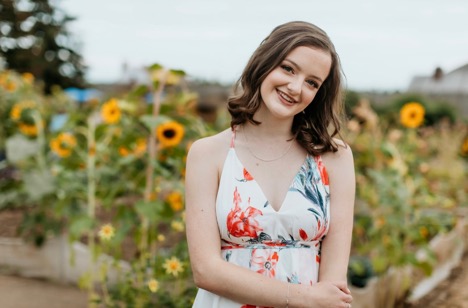
Hello, all! I am Cordy Plymale, the Interim Secretary and Non-Profit Business Management Intern for Banyan Tree Clinics. As my summer internship comes to a bittersweet end, I've been reflecting on all I have gained from this amazing experience. Healthcare accessibility, service, and helping others have always been huge passions of mine. These have been fueled by being heavily involved with various volunteer organizations which have allowed me to see healthcare issues up close. Working with food banks has heightened my awareness and concern for food insecurity and nutrition. My time with blood banks has reinforced my understanding that individual action makes a huge impact. Mentoring children with disabilities, as they learn to play soccer, has shown me the importance of giving all groups the opportunity for fulfillment. These are just some examples of experiences that have elevated my passion for healthcare and service.
Last year, as a freshman pursuing a degree in Public Health-Global Health at the University of Washington, I became inclined to gain real-world experience in the field to further grow my knowledge and make a difference. When I saw the posting for an internship with Banyan Tree Clinics, I knew right away this was a team I wanted to be a part of. The mission of improving healthcare systems in rural areas of Cambodia combined with its recognition of the importance of individuals coming together to make a difference aligned with my values perfectly. Not only that but when I first met with Alison, her genuine passion for the mission of Banyan Tree Clinics was beaming. I instantly admired that and thus, was drawn in even more.
Throughout my time with Banyan Tree Clinics, I have gained immense knowledge and compassion, as well as a deeper appreciation for the work of non-profit organizations. Working as a Non-Profit Business Management Intern, I was given the opportunity to learn how non-profits operate, specifically in the Public Health realm. Through taking part in tasks such as planning initiative projects and fundraising events, crafting social media posts, and encouraging participation and sponsorship, I was able to improve leadership, communication, and ethical skills. For example, Banyan Tree Clinics is in the process of planning to implement a garden at Koh Broteal School in Srae Sdok. This would help tackle healthcare issues in Cambodia on multiple fronts by providing nutritious produce, reducing food insecurity, educating community members, and supporting sustainable environmental practices. I have been working to connect Banyan Tree Clinics with a non-profit that could give guidance on the logistics of building a garden and have been communicating internally and externally to move forward with the planning of this initiative. Working on this particular project has taught me not only how vast of an impact gardens can have on health, but also how much planning, teamwork, and dedication it takes to make a vision become reality. Finally, taking on the role of Interim Secretary has shown me just how important thorough documentation and clear communication are, especially in a non-profit. It ensures smooth operations and shows potential and existing sponsors and supporters the difference you are making and the importance of their help.
My experience with Banyan Tree Clinics has been absolutely amazing and I am so grateful to have had this opportunity. From gaining real-world experience in the public health realm to working with a talented and welcoming team, this internship has been nothing but positive. I come out of this experience with an even stronger passion for public health, service, and helping others. While I am sad to see this internship come to an end, I am forever thankful for all I have learned from this experience and for the amazing people I have been able to work with. I am excited to watch Banyan Tree Clinics grow and hope to work with the organization in the future.

My name is Ryann Phillips and I started here at Banyan Tree Clinics as a non profit management intern and was given the opportunity to fulfill the role of Interim Director of Fundraising. This role helped to grow and learn so much throughout my time at Banyan Tree Clinics. Currently, I am a sophomore at the University of Washington and am studying Finance. I have always been passionate about helping others and have always known that I want my career to be impactful. As the Interim Director of Fundraising I was able to combine my educational pursuits with my passion for helping others, and I have been so grateful for this opportunity.
The big project that I have been working on this summer has been the Karaoke Night fundraiser. This fundraiser has helped to show me all of the detailed work that goes into planning events. This experience has been so beneficial to me because of all of the skills that I have gained while planning this event, all of which I can take along with me for the rest of my career. While planning this fundraiser, a great motivator for me was the great work that Banyan Tree Clinics would be able to accomplish with the money raised from the fundraiser. One of these projects that Banyan Tree is currently working on is a community garden. While interning here this summer, I learned about the amazing benefits that a garden can have in a community. This includes, mental and physical health, life skills, and decreasing food insecurity. Knowing that Banyan Tree Clinics has and will do such great things for the Cambodian communities made the greatest motivator to keep learning how to make the absolute most out of my internship.
This role has allowed me to acquire new skills and learn about the inner workings of a non-profit. Including all of the communication and planning that it requires to be successful and run smoothly. Working as the Interim Director of Fundraising I was able to communicate within the organization, such as with the interns, the board, and fundraising committee. As well as communicating outside of the organization with vendors and possible sponsors. By ensuring that everyone was in the loop and informed, it helped to make this whole process more seamless and productive. Another valuable lesson that I was able to learn was how to take on a leadership role. I was able to run a Fundraising Committee meeting where I was able to inform the committee of the progress that I had made on our Karaoke Night fundraiser event as well create a more collaborative time so all members could share feedback and new ideas. This meeting helped to make huge progress on the event and also helped me to learn the importance of collaborative meetings such as this one.
As my time at Banyan Tree Clinics is coming to an end, I am truly grateful for this experience. Everyone here has been so welcoming and helpful throughout my whole time here. I know that Banyan Tree Clinics will continue to do amazing things for the Cambodian community and I am proud to be able to say that I contributed to it.